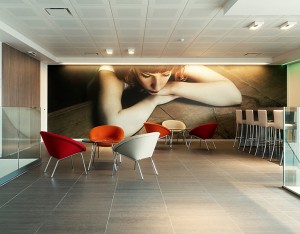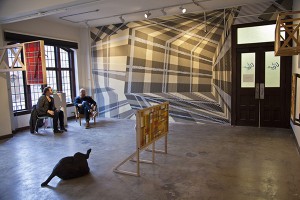Applications of technical textile products can be explained depending upon its classification as follow:
1. Agro Tech
Technical textile has extensively used in food production mostly by the fishing industry in the form of nets & ropes. But also used by agriculture and horticulture for a variety of covering & protection application. In agriculture base industry knitted, woven & non-woven products are used for wind and hail protection. Polyethylene sheets are laid on the ground for weed control. Altra high molecular weight polyethylene (Dyneema & Spectra) are finding their way in fishing, mainly due to its light weight & ultra strong strength.
2. Build Tech
Technical textiles are used in many ways in the construction of building both permanent & temporary phase. Dams, bridges, tunnels & roads in this structures technical textiles are used extensively. Temporary structures such as tents are most obvious and visible application of technical textile. Initially, these products were used to be heavy cotton fabric but nowadays cotton is replaced by lighter, rot proof, strong, UV-proof, weatherproof synthetic material.In Japan, carbon fibers are used as reinforced fibers for earth quick prone building.
3. Cloth Tech
This category includes fibers, yarns & textiles used as technical components in the manufacturing of clothing such as sewing thread, interlinings, wadding and insulations etc. other products used in clothing are press canvas, zipper used in trousers, buttons, cuff & collar canvas. Also, some decorative products used in women’s & kids garments like lace, embroidery etc. are included in this category.
4. Geo Tech
Geotextiles are generally used for four applications i.e. separation, filtration, drainage & reinforcements. The wide use of geotextiles is under the structure of road due to which life of road increases. Geotextile is also used for preservation of riverbanks, coastal protection, dams, water canals etc. geotextile is also used under the structure of railway tracks as a shock absorber in order to improve the life of railway tracks.
5. Home Tech
Technical textile products which are included under home tech are door mats, curtains, sofa covers, carpets, filters used in domestic vacuum cleaners etc. It also includes bedsheets, pillow covers, beds etc. textile materials are also used for filtration of tea granules, flour of wheat, etc.
6. Indu Tech
This includes textiles used in industrial products such as filters, conveyor belts etc. priorly cotton materials are used for this purpose but nowadays cotton replaced by synthetic materials. It is reinforced in printed circuit boards (PCB) for better workability. These are also used as different seals and gaskets. The driving belts are used for transmission of drive in various machinery.
7. Medi-Tech
The largest use of textile is for hygienic application such as wipes, baby diapers, sanitary napkins etc. These applications account for over 23% of all non-woven production.
The other sophisticated textile material used in medical are artificial ligaments, skin replacements, hollow fibers used for dialysis, artificial levers etc. even with the help of tissue engineering human organ can be grown with the help of textile fibers.
8. Mobi Tech
The products range from carpeting of a vehicle, tyre cords, air bags etc. Composite reinforcements are used for manufacturing civil and military aircraft bodies, wings, and engine components etc. The textile fabric is used as acoustic material in the silencer of vehicles. It is more helpful in vehicle air conditioners for filtration purpose. Carbon composite materials are used for manufacturing of Formula 1 racing cars, because of its light weight & high strength.
9. Oeko Tech
These includes the material used for protection of environment and ecology. The products which are used for filtration of toxic gasses and waste water filtration medias are included in it. It also includes the products which are used as acoustic material in order to reduce the noise pollution due to various causes. Also biodegradable, one time usable (use & throw material) textile materials are included in it such as non-woven jute carry bags, coverings etc.
10. Pack Tech
These includes the bags & sacks traditionally made from cotton, flax & jute but nowadays bags are made from polypropylene (pp) which is very cheap & strong. This is used for efficient handling, storage & distribution of powdered or granular material like sugar, fertilizer, cement, flour, etc.
11. Protech
The various textile materials used in the protection of human beings & their property. The various jackets used to protect harsh atmospheric conditions, bullet proof jackets and various gloves used in various industries, face masks used in chemical industry etc. are included in the protective textile. The suits of soldiers fighting in various conditions such as forest, deserts, and higher altitude snowsuits. These all fabrics will be required in camouflage properties.
12. Sports Tech
The various products used in sports application are included in it such as playing turf of hockey ground, nets used in various games like football, tennis, table tennis, basketball, hockey, etc. The sports tech also includes the different types of protective materials used in various games such as gloves, helmets, safety pads, etc. Also, the playing equipment such as rackets, balls of various games like football, tennis, cricket, volleyball, etc. the carbon fibers are used for manufacturing of frames of the bicycle, the body of formula1 racing cars, sports bikes which are stronger than metal & lighter than metal.
This article comes from textilemates edit released


